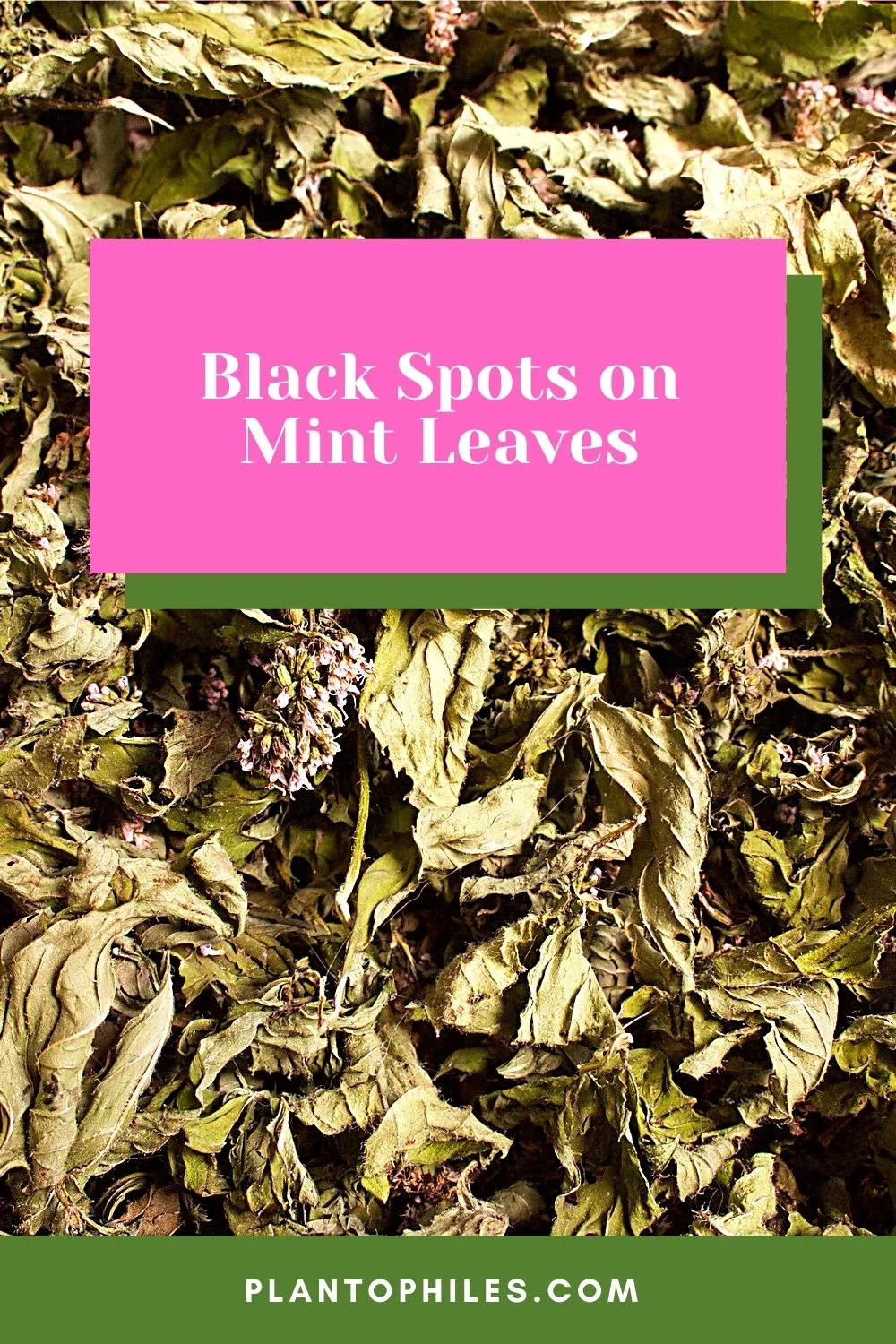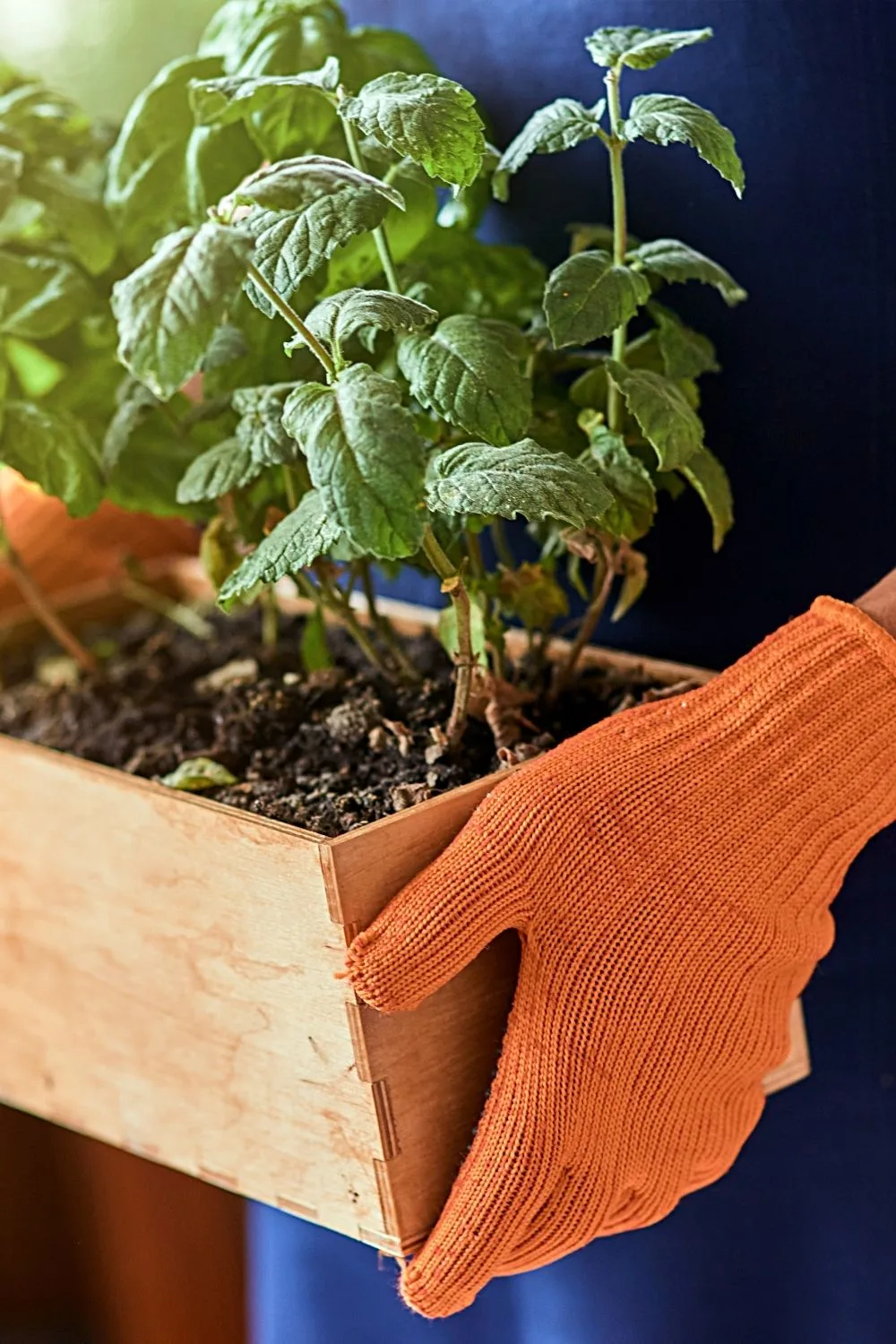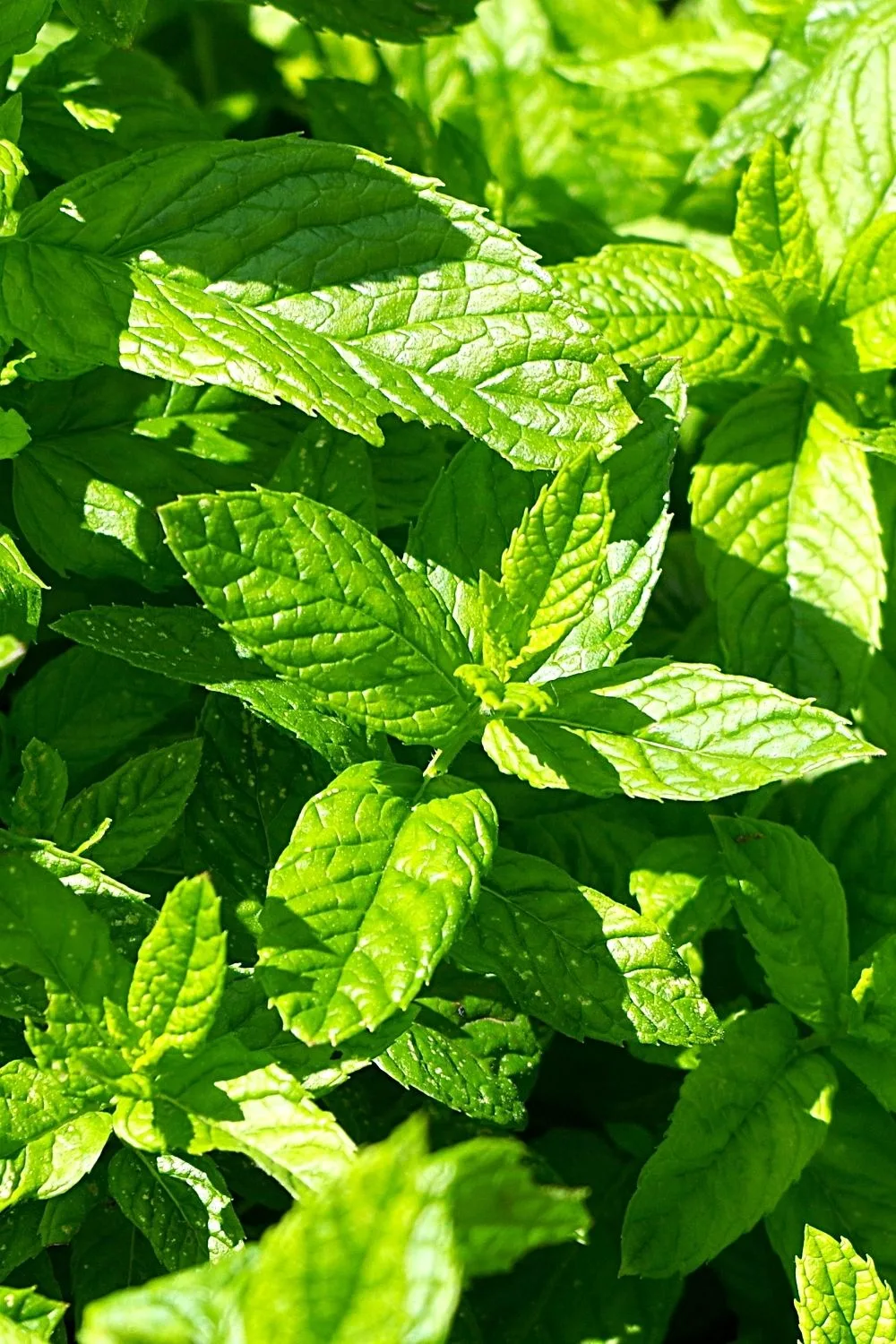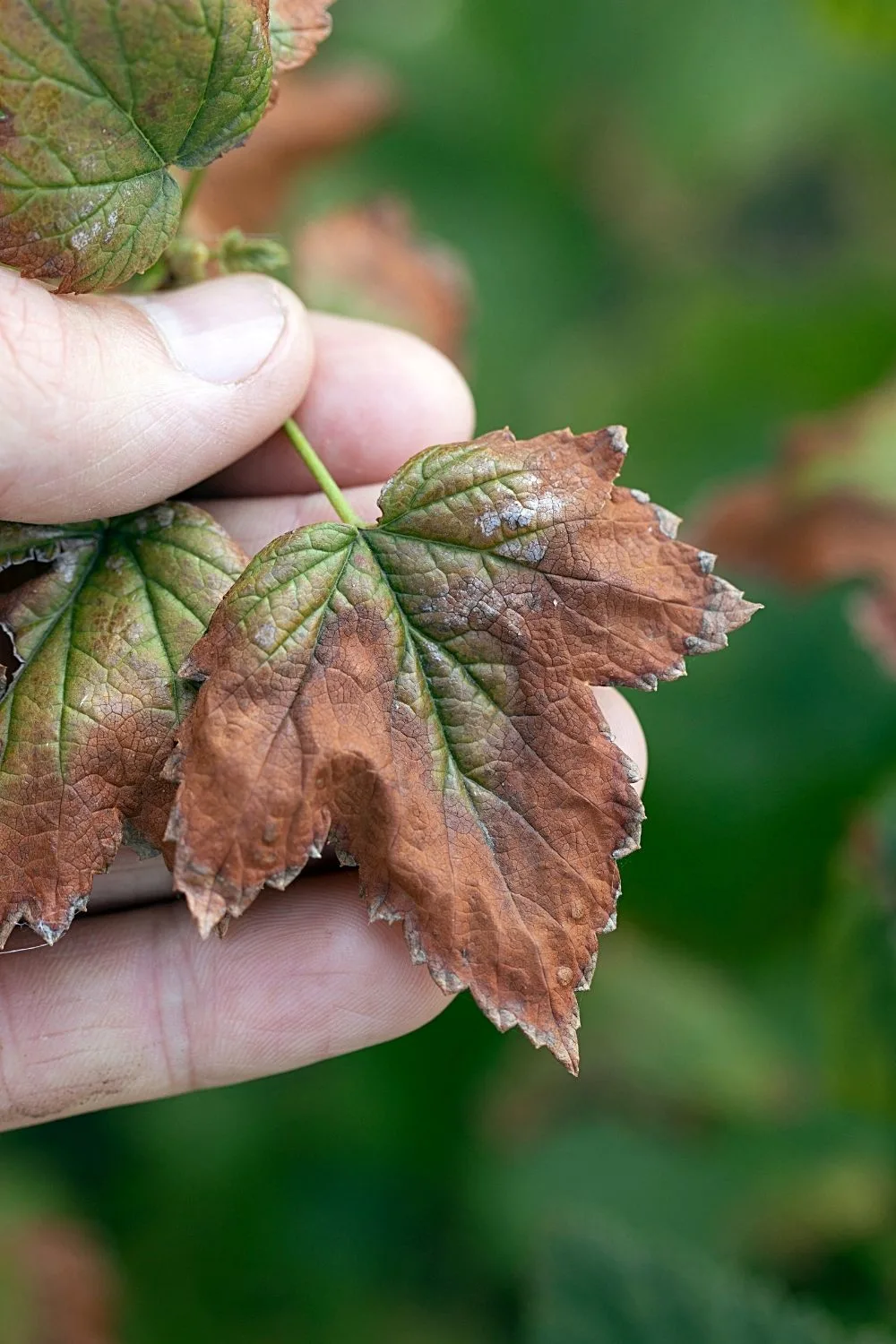Mint comes from the genus Mentha, according to the University of Maryland, and there are more than 600 varieties to adorn your herb garden.
The most common one is the green Mint leaves that are used to add a fresh aroma and taste to drinks and other food recipes. You can use the leaves in dried or fresh form.
But sadly, if the leaves have black spots, it’s possible you can’t use them.
Several remedies are available to treat Mint leaves with black spots, and this article discusses everything you need to know to keep the Mint leaves fresh.
Table of Contents
Black Spots on Mint Leaves
Black spots on Mint leaves are often caused by watering issues or poor drainage. High temperatures can also result in black areas as these areas are burned by the intense heat. Other common reasons are Mint rust, Verticillium wilt, and leaf blight.

Black Spots on Mint Leaves
Causes and Remedies for Black Spots on Mint Leaves
Mint is a famous food flavor used in teas, ice creams, and other food items. For this reason, it’s the most common type of herb for home gardening.

Mint is an herb commonly used as a food flavor in teas, ice creams, and other food items
This tough herb plant can develop black spots due to several reasons.
1. Overwatering
The Mint plant requires adequate moisture to thrive and stay healthy, but this does not mean you overdo it.
Watering it every other day can cause black areas on Mint leaves.
In addition to excess water, lack of adequate drainage can also stress the sensitive roots of the Mint.

As the mint’s roots are sensitive, make sure to plant it in a container or pot with adequate drainage
You can avoid overwatering by watering your mint less frequently, shifting it to a big container, or using light soil that ensures proper drainage.
2. Temperature
Although the Mint plant thrives in full or partial sun, exposing it to extremely high temperatures can burn the leaves. And they will also turn brown/black.

If you expose your Mint plant to extremely high temperatures, its leaves will get burned
Make sure you grow Mint plants under temperatures ranging from 55 to 70 degrees Fahrenheit (13 to 21 degrees Celsius).
If you live in an extremely hot climate, you can increase the watering frequency for your Mint plant.
3. Verticillium Wilt
Verticillium wilt causes the Mint leaves to change color and appearance. The infected leaves turn black, twist, and start curling.

Like in other plants, Mint can also contract the Verticillium Wilt, causing its leaves to change color and appearance
This soil fungus cannot be treated with any fungicide. Hence, dispose of the infected Mint plant.
4. Mint Rust
This rusting is caused by Puccinia menthae fungus, and it destroys the lush green appearance of Mint leaves.
It also impacts the new growth of the plant because new leaves are pale and shoots are distorted.
Mint rust causes ugly black spots on the leaves and weakens the whole plant. It also creates a perfect environment for leaf blight.
This rust starts as small bright orange spots found on the leaves’ undersides. It occurs mostly in late spring or summer.
These spots are bumpy and have a dusty appearance.
If the rusting begins in summer, the spots are yellow and turn black by autumn. If you do not treat it as soon as possible, it can not only kill the infected plant but also spread to nearby Mint plants.
Dispose of the rusted Mint leaves to avoid the spread of the fungus to other healthy leaves.
If the spots have turned black, you should dispose of the soil as well since the fungus spores can contaminate the soil.
Repot the healthy part of the Mint plant in fresh soil and increase the airflow around the plant.

Once your mint contracts the mint rust, repot the healthy part of the Mint plant in fresh soil, increasing its airflow
Make sure you sanitize your gardening tools multiple times in between the leaf removal; otherwise, you might end up transmitting the fungus to healthy plants/leaves.
Mixing rubbing alcohol and water in equal portions can be used for sanitation.
Since the rust fungus thrives in wet conditions, avoid leaving the leaves wet for too long.
Try to water the Mint leaves early morning to let the leaves dry throughout the day. Avoid overhead watering as it increases the chances of having water on the leaves for extended periods.
You can also use fungicides to get rid of the fungus.
5. Leaf Blight
Leaf blight is caused by a fungus named Cephalosporium spp. And it is a common issue for Mint plants that are weak after Mint rusting.
Although this is rare, it spreads really fast.
The initial symptoms of leaf blight on Mint leaves are irregular black spots. But once the blight takes over, the leaves will start falling even before maturing and turn completely black.
If you leave Leaf Blight untreated, the end result will be the death of your Mint plant.
Remember that this blight fungus can attack your plant at any time of the year, but several growers have reported it during damp and cool weather of spring and winter.
Since there is no cure for leaf blight, Mint leaves suffering from blight should be removed.
In winter, move your Mint plant to a warmer location where it receives plenty of sunlight to avoid leaf blight.
Ideal Growing Conditions for Mint Leaves
Keeping your plant healthy at all times is the best way to avoid any disease or infection.
Water
If Mint is growing in a pot, make sure the potting soil remains moist at all times.
I would recommend watering the Mint plant at the base/ soil or using a hose.
Soil
The best soil for this plant is rich in organic matter, stays moist, and also drains the extra water effectively.
Sunlight
This plant thrives better in partially shaded locations compared to full sunlight.
Fertilizer
Feed your plant with a herb or balanced fertilizer in the spring season when new growth appears.
Leach the soil regularly to avoid high salt content.
Frequently Asked Questions about Black Spots on Mint Leaves
How can I differentiate between black spots caused by poor drainage and overwatering?
You should inspect the leaves on the plant’s bottom and top areas. If the top leaves are healthy, but the bottom leaves near the base of the plant have black spots, the reason is poor drainage.
Can pests cause black spots on Mint leaves?
Mint aphids can cause the lush green leaves of your Mint plant to turn black and even die. A small infestation of Mint aphids can be treated using horticultural soaps or neem oil. In case of heavy infestation, you can opt for insecticide.

Daniel has been a plant enthusiast for over 20 years. He owns hundreds of houseplants and prepares for the chili growing seasons yearly with great anticipation. His favorite plants are plant species in the Araceae family, such as Monstera, Philodendron, and Anthurium. He also loves gardening and is growing hot peppers, tomatoes, and many more vegetables.


